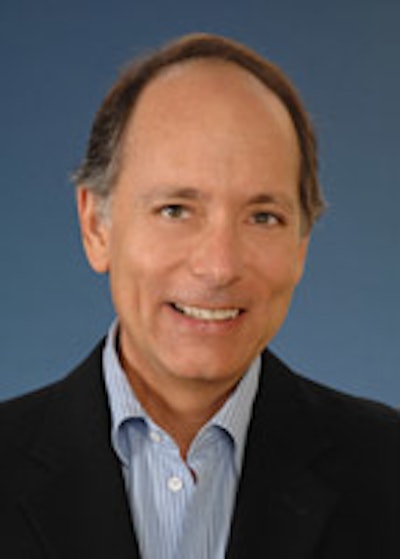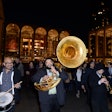
Each year, 8,000 members of the film industry gather in Santa Monica for the American Film Market, where they buy and sell rights to motion pictures in a marketplace format, making $800 million in deals in eight days. Spearheading the event is Jonathan Wolf, executive vice president for parent organization Independent Film & Television Alliance, and managing director for the AFM. Wolf talked to us about the unique challenges of planning the highly choreographed event—which rolls into Santa Monica from November 5 through 12—and how the writers strike and the overall economy have affected the program.
How is planning this trade show different from planning any other?
The AFM is very different from a typical trade show. Firstly, you can’t see a motion picture on a trade show floor; you need to go to a theater. So a very important part of the American Film Market is staging the event where we have access to at least a couple dozen theaters in close proximity.
The second difference is that most of the show is about negotiating and closing deals, not just about marketing and creating general interest. This means that the exhibitors don’t want big open space on a trade show floor; they want offices where they can shut the door and have a negotiation. This is why we take two hotels in Santa Monica [Loews Santa Monica Beach Hotel and Le Merigot Beach Hotel], close them for two weeks, and convert both hotels into office buildings. All of the beds in the hotel get moved out, and all of the companies move in things they need to create excitement about their films. We have five days to prep—the challenge is doing that in an efficient manner. You don’t have the benefit of taking a forklift to the trade show floor and dropping things in booths. We’re working in an eight-story hotel with elevators designed for guests, not for moving the kind of freight we bring in and out.
Has the state of the economy affected plans?
No. Our trade show would be a lagging indicator on what might be going on. The decision to make the films that we’ll be screening was done a year or two ago. We are still tracking attendance; it’s slightly ahead of last year. The amount of product and exhibitors is at the same level. The fact is, even in times of recession, people still go to the movies. If companies around the world are interested in showing a film, they need to come to the AFM to acquire that film.
Did last year’s WGA strike have an effect?
No. The American Film Market is all about independent film. Many of the independents negotiated deals with the Writers Guild before the studios did. They moved forward with production whereas the studios weren’t able to. Obviously, those coming from outside the United States aren’t affected.
What makes Santa Monica the ideal location for the business-to-business group?
We need three things for our show—a quarter million square feet, 2,000 hotel rooms, and two dozen theaters all in close proximity to each other so people can move quickly from show floor to hotel to theater. Within Southern California, Santa Monica offers the best opportunity to do that. The bonus is the shopping and dining options. We bring in people from about 70 countries, so having lots of choice in a familiar, comfortable, safe environment is important to them.
Our attendees break down into three groups. First are the companies who have offices there, selling or licensing film—there are about 400 companies. Then you have buyers from around the world. The third group is all of those involved in production—producers, bankers, financiers, film commissioners, film festival directors, writers, and a very few actors.
How do AFM premieres differ from Hollywood premieres?
They are private screenings, no press allowed, not for the public, no red carpet, no talent. There are a little over 100 world premieres, for the industry only. It means not only has the public not seen it, the industry hasn’t seen the film either. Many of these films will ultimately have their red carpet premiere event somewhere, whether it’s a film festival or [in] Hollywood. Some of them might head straight to DVD or cable; some are art films that won’t have a high profile; and some will have a very high profile.
How do you decide the seminars and panels?
We invite industry organizations to program them. If you look at every seminar, you’re going to see who the programmer is, and in most cases, it’s not us. We invite the Writers Guild, the Producers Guild, the Directors Guild, Women in Film, Film Independent, cinematographers, and others to choose whatever topic they want, choose the speakers, and we produce the event. Each of these organizations is taking it upon themselves to have the best event that they can at the American Film Market.
The show is now in its 29th year. Is it continuing to grow?
We’re growing from an attendance standpoint. We’ve taken the decision not to expand our show floor beyond what we are doing now—the entire Loews and half of Le Merigot.
We continue to enhance and tweak and just listen to our audience. Ultimately we’re about serving the industry and serving our audience. When they tell us of something new, we address that, and sometimes we present new ideas to them. Trade shows—because they only take place for a few days every year—turn very slowly. Whatever change we make, we have to wait a year to do it.



















